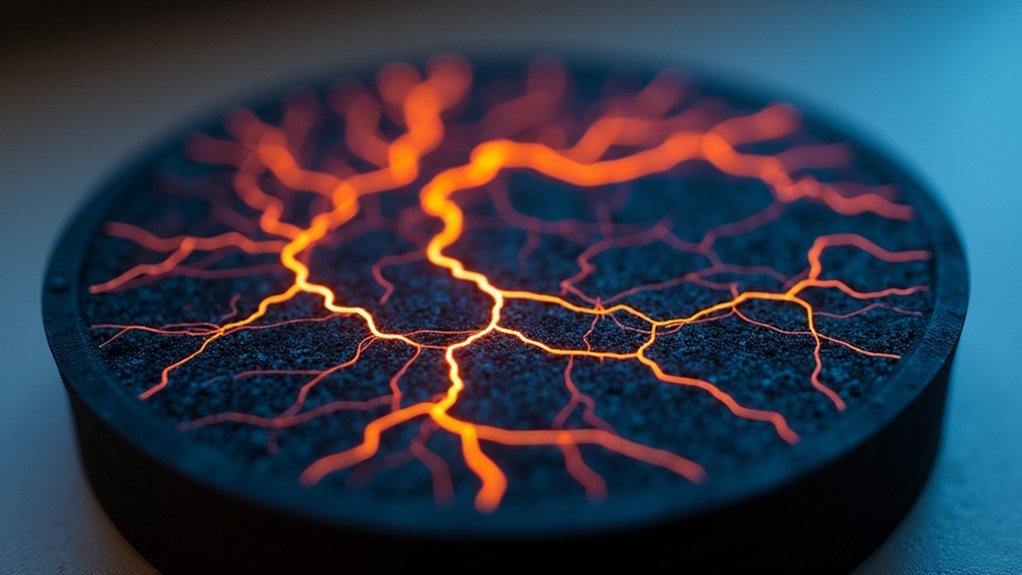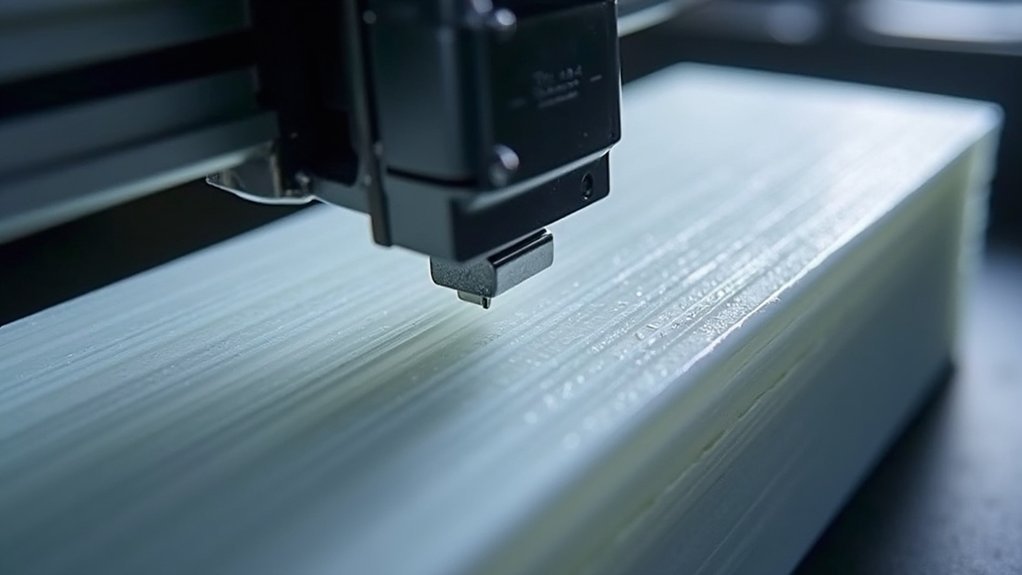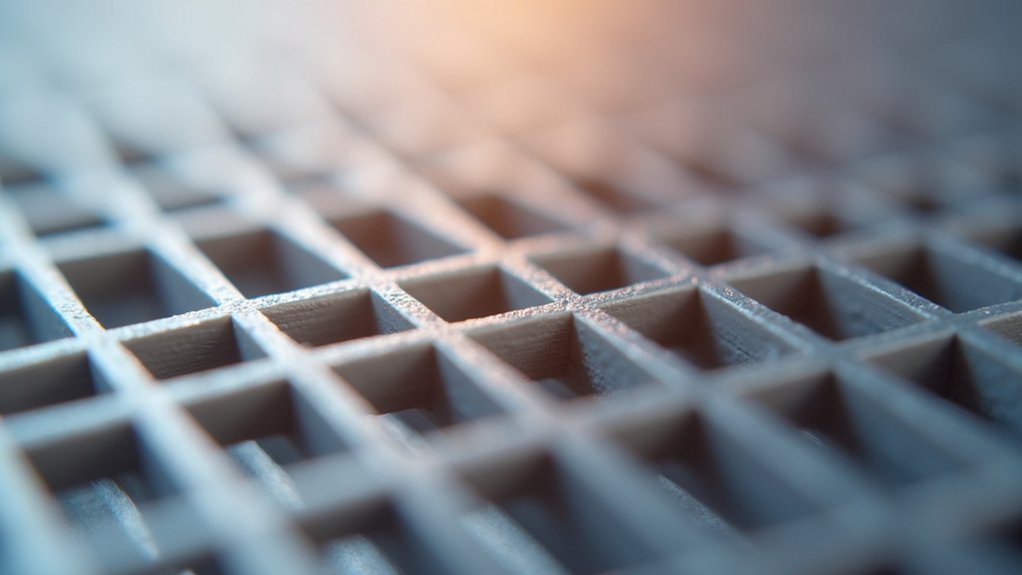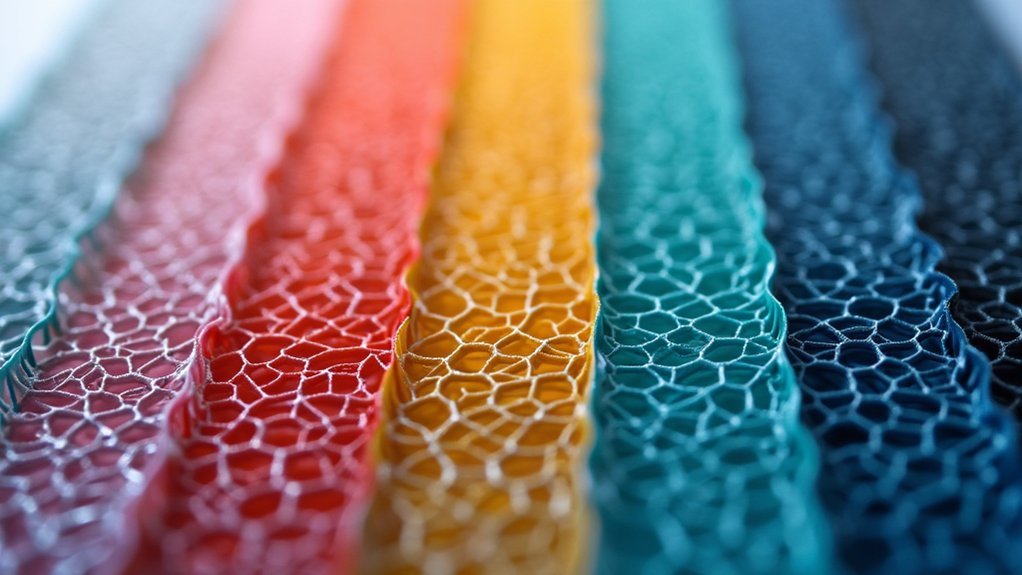You can dramatically speed up your 3D prints with these five fast infill patterns: Lightning infill cuts print time by up to 50% using a tree-like structure that minimizes material usage. Gyroid infill balances speed with strength through continuous curves. Rectilinear infill offers simple linear patterns with fewer directional changes. Cubic infill provides efficient three-dimensional grids for quick, robust prints. Grid infill delivers straightforward cross-hatch designs that reduce time and material consumption while maintaining moderate structural integrity for most applications.
Lightning Infill: The Ultimate Speed Champion

When you’re racing against tight deadlines, lightning infill stands out as the fastest infill pattern available in 3D printing. This unique design resembles a tree or lightning bolt, strategically placing material that needs support while minimizing infill density elsewhere.
You’ll achieve faster print times because it dramatically reduces the amount of material used compared to different infill patterns.
Lightning infill concentrates density underneath bridging layers but leaves minimal infill in other areas. This approach boosts print speeds by requiring less melting and deposition time.
Lightning infill strategically places material only where needed, dramatically reducing print time by minimizing melting and deposition requirements.
While it won’t provide significant structural strength, it’s a good choice for quick prototypes or parts where you need internal support without demanding structural requirements.
Gyroid Infill: Balancing Speed With Strength
While lightning infill excels at pure speed, gyroid infill offers you the perfect middle ground between rapid printing and structural integrity.
Unlike traditional honeycomb patterns, gyroid’s continuous curving structure eliminates abrupt movements, delivering some of the fastest infill printing times while maintaining exceptional strength.
This strongest infill pattern provides uniform resistance in all directions, making it superior to honeycomb for load-bearing applications.
Here’s how to optimize gyroid for maximum material efficiency:
- Adjust infill percentage – Use lower densities than standard patterns while maintaining strength
- Increase layer height for infill sections in your slicer settings
- Experiment with print speeds – gyroid’s smooth geometry allows higher speeds without quality loss
Gyroid transforms fast infill printing by proving you don’t need to sacrifice structural performance for speed.
Rectilinear Infill: Simple and Fast Linear Patterns

Simplicity drives the effectiveness of rectilinear infill, making it one of the fastest patterns available for 3D printing.
You’ll find this among the fastest infill patterns because your print head makes fewer directional changes, resulting in faster completion times. This pattern works exceptionally well at lower densities when you’re prioritizing speed over maximum strength.
While rectilinear infill doesn’t distribute stress evenly like more complex patterns, it provides good strength in one direction.
You can enhance structural integrity by increasing wall counts without creating significant speed bumps in your printing process.
When comparing infill patterns to choose from, rectilinear stands out for different models requiring quick turnaround times, making it the default choice in most slicing software.
Cubic Infill: Efficient Three-Dimensional Structure
Cubic infill takes a three-dimensional approach that builds upon rectilinear’s speed advantages while adding structural benefits in multiple directions.
This three-dimensional grid creates a robust framework that delivers isotropic strength, ensuring consistent support throughout your printed object.
You’ll achieve fast print times thanks to its simple, repetitive geometric design that minimizes complex printer head movements while maintaining excellent material efficiency.
Here are three key advantages of cubic infill:
- Balanced Performance – You get ideal strength-to-weight ratios by adjusting infill density to match your project requirements.
- Universal Compatibility – It works effectively across different materials, making it a versatile choice for various applications.
- Dual-Purpose Design – Perfect for both functional printing projects requiring durability and aesthetic printing where consistent internal structure matters.
Grid Infill: Straightforward Cross-Hatch Design

Grid infill delivers exceptional printing speed through its straightforward cross-hatch design that forms intersecting lines across your print’s interior. You’ll find this pattern reduces both time and material compared to complex alternatives, making prints faster to print while maintaining moderate strength for most 3D printing applications.
The grid’s simplicity minimizes directional changes, reducing travel time and material usage. However, you should consider potential mechanical wear from nozzle contact with existing filament during printing.
| Aspect | Advantage | Consideration |
|---|---|---|
| Speed | Fewer directional changes | Faster completion times |
| Material | Reduced filament usage | Lower printing costs |
| Strength | Moderate structural integrity | Suitable for general purposes |
| Maintenance | Simple pattern execution | Potential nozzle wear |
Grid infill works perfectly when you need balanced performance without complex geometries.
Frequently Asked Questions
Which Infill Pattern Prints the Fastest?
You’ll find lightning infill prints fastest since it provides minimal internal support while drastically reducing print time. However, you should consider rectilinear and cubic infills as close alternatives for speed efficiency.
What Is the Fastest Support Pattern?
You’ll find lightning infill is the fastest support pattern for 3D printing. It creates tree-like structures that concentrate support only where needed, reducing material usage and print head movements for quicker results.
Is Gyroid Infill Faster?
You’ll find gyroid infill faster than many traditional patterns due to its continuous, curving structure that reduces abrupt print head movements. However, it’s not the fastest option—rectilinear and lightning infill beat it.
What Is the Best Infill Setting for 3D Printing?
You’ll find gyroid infill at 15-20% density works best for most applications. It provides excellent strength-to-weight ratio while printing quickly. Adjust density based on your part’s load requirements and intended use.





Leave a Reply